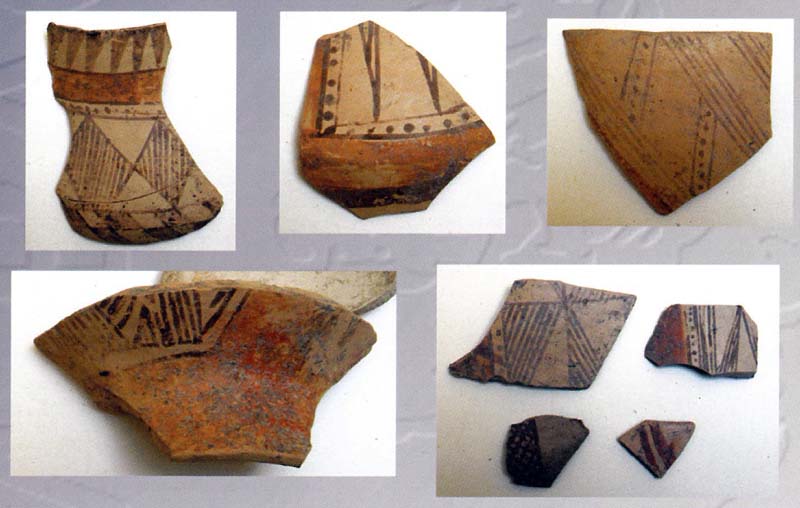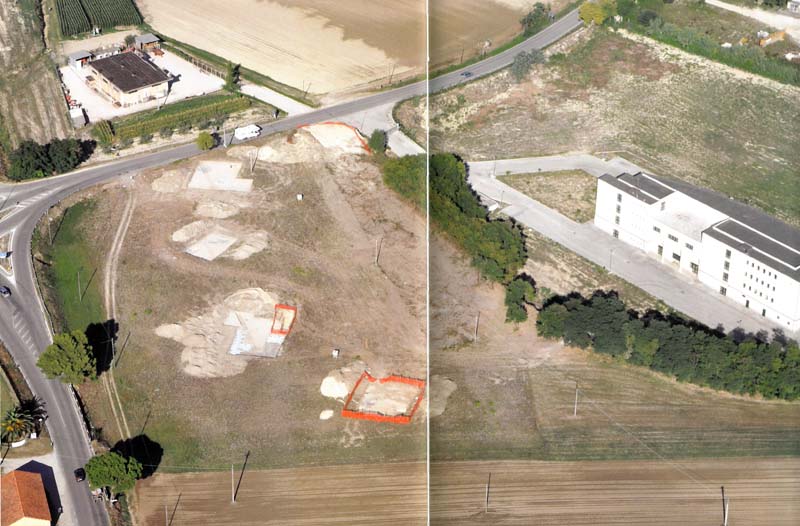In the ceramics of the Culture of Ripoli three main classes are distinguished: figurine of highly purified mixture of yellow or pink colour, fine black or reddish smoothed and polished, coarse with large inclusions and white granules.
In fine pottery, truncated conical bowls predominate, often decorated on the inside, just below the rim, with an incised line or a row of carved triangles.
In the figulina pottery there are hemispherical vases, keeled jugs with a ring handle surmounted by an anthropomorphic appendage, flask vases with four small bosses drilled under the rim: they are painted with the typical syntax of red bands and bands filled with a row of dots browns that form squares which enclose geometric motifs in lines, triangles, rhombuses.
About these types of decorations writes Marija Gimbutas "… Belief in the sanctity of life-giving water … extends from prehistory to this century … A considerable number of vessels from all periods of the Neolithic and Copper Ages are decorated with painted or incised parallel lines in vertical or diagonal bands, with vertical zigzags or wavy lines simulating rain … The stream pattern … is often compartmentalized (closed and delimited by bands) the usual procedure for indicating that the sign has been used as a symbol …” (from Marija Gimbutas, chapter 5 “Streams” – Venexia 2008).
As for the anthropomorphic appendages, a more accurate investigation could probably relate them to containers for water or for propitiatory rites.
That of Ripoli is a pottery that has strong similarities – as Marija Gimbutas points out in the text The Civilization of the Goddess – with the Danilo pottery, a site on the Adriatic coast of Dalmatia (5500/4000 BC). A ceramic characterized, like that of Ripoli, by the red and black colors, much more sophisticated than the previous impressed ceramic. And this supports the thesis of intense exchanges between the populations of the two shores of the Adriatic.


Historical notes
For the historical notes see report "The Culture of Ripoli"
CARD
LATEST PUBLISHED TEXTS
VISIT THE FACTSHEETS BY OBJECT

